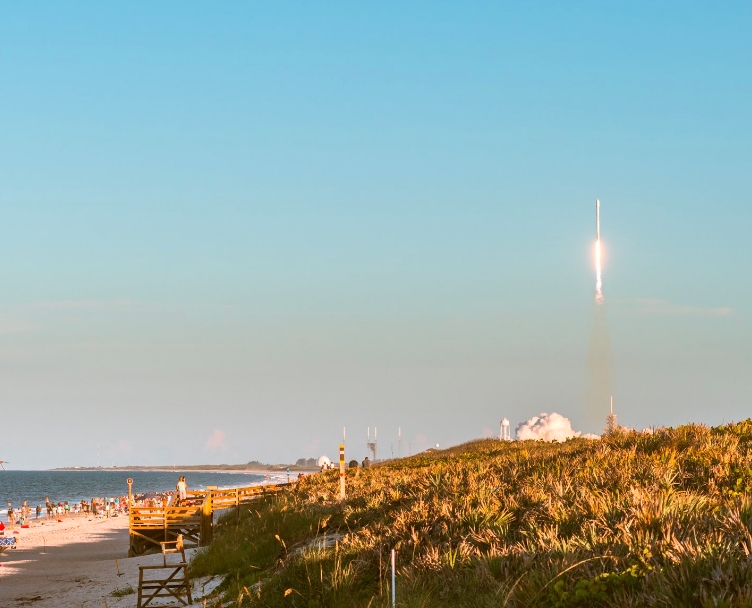SpaceX has successfully launched a commercial communications satellite into orbit with a NASA Earth science instrument aboard. The Intelsat 40e satellite was carried by a SpaceX Falcon 9 rocket from Florida’s Cape Canaveral Space Force Station. This was the fourth flight for the Falcon 9’s first stage, which landed successfully on the company’s drone ship, A Shortfall Of Gravitas, in the Atlantic Ocean. Intelsat 40e will settle in a geostationary orbit (GEO) at 91 degrees West, and perform its main communications role while allowing NASA’s Tropospheric Emissions Monitoring of Pollution (TEMPO) to take hourly snapshots of air pollution over North America.
TEMPO Provides a Unique Difference in Geostationary Look
TEMPO is a geostationary hosted payload that will measure ultraviolet, visible and near-infrared light spectra to detect levels of key pollutants including ozone, formaldehyde, and nitrogen dioxide. The Earth Science Division Director at NASA’s headquarters, Karen St. Germain, said TEMPO provides a unique difference in geostationary look that will provide much higher resolution data than other missions. The TEMPO’s primary mission is for 20 months but could go on working beyond this.

Maxar and NASA Officials Hail Hosted Payload Approach
The Intelsat 40e is an advanced geostationary satellite that will provide high-throughput connectivity to the company’s government and enterprise customers across North and Central America. Developed by Colorado-based Maxar Technologies, it carries NASA’s Tropospheric Emissions Monitoring of Pollution (TEMPO) as a hosted payload. The hosted payload approach was hailed by both Maxar and NASA officials as it allows for shared cost and capability among government and commercial users. With the success of this launch, SpaceX continues to demonstrate its ability to provide reliable and cost-effective space launch services.


















